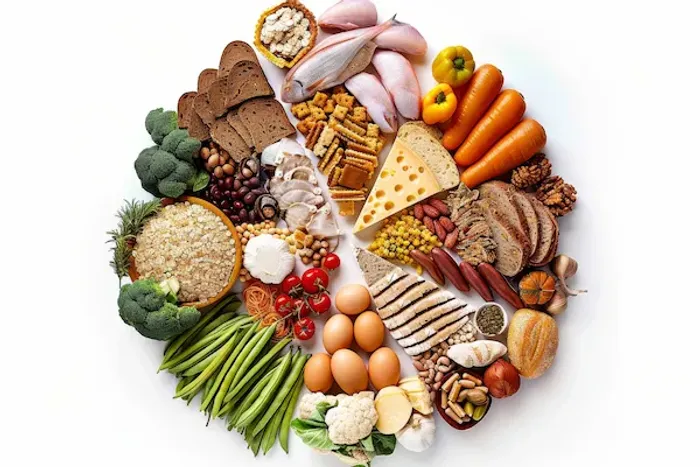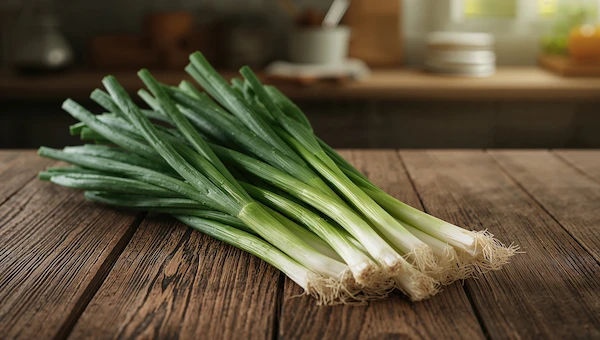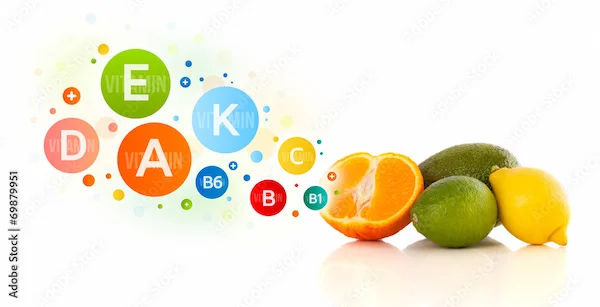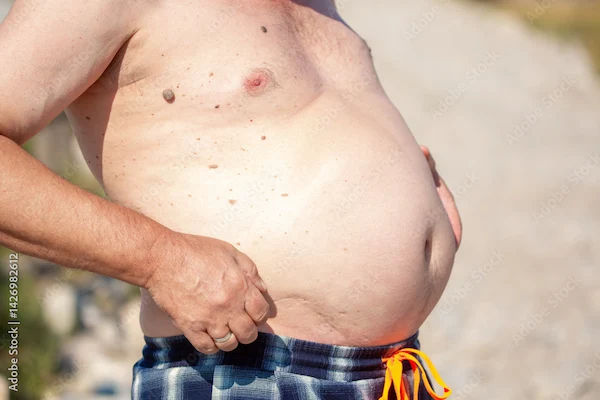Guide to What Should Be Post Fracturetrauma Diet
What should you eat after a bone fracture? Discover the essential vitamins, minerals, and foods to include in your diet to support bone regrowth and speed up recovery.

Written by Dr. M L Ezhilarasan
Reviewed by Dr. Dhankecha Mayank Dineshbhai MBBS
Last updated on 24th Oct, 2025

Introduction
A broken bone or traumatic injury doesn’t just need a cast or a brace—it needs fuel. The right post fracture trauma diet can speed up healing, preserve muscle, and reduce complications, while the wrong choices can stall recovery. Yet many people only focus on calcium and overlook the bigger picture: you also need enough calories, high-quality protein, vitamin D, vitamin C, magnesium, zinc, and healthy fats. Appetite often drops after injury, pain meds can cause constipation, and if you’re less mobile, it’s tempting to eat less. That combination can quietly starve your healing bone.
This practical guide turns evidence into action. You’ll learn exactly how much protein to eat, how to time meals, what vitamins and minerals matter most, and how to plan simple, tasty menus—even if you’re on a budget, vegetarian, or dealing with diabetes or kidney issues. We’ll also cover smart supplements, red flags that signal slow healing, useful lab tests, and when to consult a clinician. Whether your fracture/trauma is recent or you’re weeks into recovery, use this plan to feed healing from the inside out.
How fracture trauma changes your nutrition needs?
The three phases of healing: inflammation, repair, remodeling
After fracture trauma, your body moves through three overlapping phases. First comes inflammation (days 1–7): immune cells flood the site to clear debris and signal repair. Then the repair phase (weeks 2–6): a soft callus forms and mineralizes into hard callus. Finally, remodeling (months): bone reshapes and strengthens along stress lines. Each phase has different nutrient needs—protein and energy are consistently important, while vitamin C helps collagen early and minerals (calcium, phosphorus, magnesium) support mineralization during repair
Why do your energy needs rise after trauma?
Injury raises your metabolic rate; even a single fracture increases energy needs, and major trauma or surgery can push them 15–30% higher than baseline. If you under-eat (common with low appetite), your body breaks down muscle and even bone proteins to meet demand—slowing healing and weakening you for rehabilitation. A practical target for most adults is your usual maintenance calories plus 10–20% during the first 2–4 weeks, adjusting to body size and activity.
Appetite dips and “anabolic resistance” after injury
Inflammation and inactivity create “anabolic resistance,” meaning your muscles and tissues respond less robustly to protein. The fix is not only getting enough total protein but also distributing it across meals with 25–40 g high-quality protein at a time to hit the leucine threshold that switches on repair. Add gentle activity (as cleared by your clinician) to further improve your body’s response.
Unique insight: Think “more protein, better timing.” If pain meds suppress appetite, use smoothies or soups to deliver high-density nutrition without large portions.
Consult a Top General Physician
Protein and calories: exact targets and how to hit them
How many grams per day? Simple formulas by weight and age
For most adults after fracture trauma: 1.2 -- 1.6 g of protein per kilogram body weight per day; older adults or major trauma may benefit from 1.6 -- 2.0 g/kg (as tolerated) . Example: 70 kg adult → 85–110 g/day (possibly up to 140 g if older or post-op). Calories: typically maintenance +10–20% early on. Track weight weekly—losing >0.5 kg per week suggests under-fueling.
Protein quality, leucine, and even distribution across meals
Aim for 25–40 g protein at breakfast, lunch, dinner, and 15–30 g as a snack or before bed. Include leucine-rich sources (dairy, eggs, poultry, fish, soy) to trigger muscle protein synthesis. If you’re plant-forward, combine legumes with grains or seeds (rice + lentils; hummus + whole wheat pita) and consider fortified soy milk or tofu to boost leucine and calcium. Casein-rich yogurt or cottage cheese before bed helps overnight recovery.
Sample day of protein for omnivores and vegetarians
Omnivore example (≈110 g protein): Breakfast—Greek yogurt parfait with nuts and berries (30 g). Lunch—Chicken and quinoa bowl with vegetables (35 g). Snack—Protein smoothie with milk, banana, and peanut butter (20 g). Dinner—Baked salmon, sweet potato, and spinach (30 g).
Vegetarian example (≈100–110 g): Breakfast—Tofu scramble with whole grain toast (30 g). Lunch—Lentil and farro salad with feta (30 g). Snack—Soy milk smoothie with chia (20 g). Dinner—Rajma (kidney bean curry) with brown rice and a side of paneer or tempeh (30 g).
Vitamins and minerals that matter most
Calcium and vitamin D: targets, food lists, sunlight, labs
Calcium: Adults generally need 1,000–1,200 mg/day (from food + supplements) . Food-first sources: dairy (milk, yogurt, paneer), fortified plant milks, tofu set with calcium sulfate, sardines/salmon with bones, sesame (til), ragi (finger millet), leafy greens (amaranth, kale). Vitamin D enables calcium absorption; many adults with fractures are deficient . Common supplemental ranges: 800–2,000 IU/day, individualized based on blood 25(OH)D levels (target often 30–50 ng/mL). If you suspect deficiency or have limited sun exposure, a vitamin D test is useful. Apollo24|7 offers a convenient home collection for tests like vitamin D.
Vitamin C and vitamin K for collagen and bone matrix
Vitamin C is essential for collagen cross-linking that stabilizes early callus. Aim for at least 75–120 mg/day; 200 mg/day is reasonable during early healing via food (citrus, guava, amla, kiwi, bell pepper, broccoli) or a modest supplement . Vitamin K (K1 from greens; K2 from fermented foods like natto) supports osteocalcin activation; include greens daily and consider fermented foods if culturally acceptable.
Magnesium, zinc, copper, manganese, and phosphorus
Magnesium (≈320–420 mg/day) aids vitamin D activation and bone mineralization; find it in nuts, seeds, legumes, whole grains, and dark chocolate. Zinc (8–11 mg/day) is a cofactor for collagen enzymes; sources include seafood, meat, pumpkin seeds, chickpeas. Copper and manganese are needed in small amounts for cross-linking and cartilage formation (nuts, seeds, whole grains). Phosphorus partners with calcium for hydroxyapatite crystals—most people meet needs unless intake is very low.
Practical daily ranges and safety notes
Calcium 1,000–1,200 mg; Vitamin D 800–2,000 IU (test to personalize); Vitamin C 200 mg via food/supplement; Magnesium 320–420 mg; Zinc 8–11 mg; Vitamin K from daily greens. Avoid excess vitamin A (>3,000 mcg retinol/day) which may counter bone health. If you take blood thinners, keep vitamin K intake consistent and consult your clinician.
Fats, carbs, and anti-inflammatory choices
Omega-3s to balance inflammation (food-first strategy)
Omega-3 fats can help modulate inflammation after fracture trauma. Aim for 2–3 servings/week of fatty fish (salmon, sardines, mackerel) or a daily plant source (chia, flax, walnuts). If using supplements, typical combined EPA/DHA is 1,000 mg/day; discuss with your clinician if you’re on blood thinners. Food-first approaches also deliver vitamin D (from fish) and protein.
Carbohydrates for energy and blood sugar control
Carbs power healing and rehab. Choose low-glycemic, fiber-rich carbs—oats, quinoa, brown rice, whole wheat chapati, millets, beans, fruits, and vegetables. For those with diabetes, spread carbs evenly, pair with protein and fiber, and monitor glucose closely. Good glycemic control supports better outcomes and lowers infection risk . If you’re on steroids or have high blood sugars post-op, adjust with your care team; Apollo24|7 can help you consult a doctor online for medication and nutrition adjustments.
Fiber and fluid to counter painkiller-related constipation
Opioids and calcium supplements can constipate. Target 25–35 g fiber/day and 2–3 L fluids (unless restricted). Add prunes, kiwi, soaked chia, psyllium husk, and warm liquids. A simple morning routine: warm water + lemon (vitamin C), followed by breakfast with oats and fruit.
Smart supplementation: what helps, what to skip
Collagen or gelatin + vitamin C timing
Small human trials suggest 15 g gelatin with 50 mg vitamin C taken 30–60 minutes before light activity may boost collagen synthesis in connective tissues. While data are stronger for tendons/ligaments than bone specifically, collagen contributes to bone matrix. Practical tip: mix collagen peptides or gelatin in tea, coffee, or smoothie, pair with fruit rich in vitamin C, then do hand/ankle pumps or physio exercises as prescribed.
Creatine to protect muscle during immobilization
Creatine monohydrate (3–5 g/day) may help preserve muscle mass and strength during periods of reduced use, with a well-documented safety profile in healthy adults . It can indirectly support fracture/trauma recovery by maintaining muscle around the injured area, aiding rehab.
Probiotics after antibiotics; what to avoid (excess vitamin A)
If you received perioperative antibiotics, a multi-strain probiotic or fermented foods (yogurt, kefir, idli/dosa batter, kimchi) may support gut balance. Avoid megadoses of fat-soluble vitamins, especially vitamin A in retinol form, which in excess can harm bone . Be cautious combining multiple supplements that duplicate calcium or zinc.
Safety, interactions, and when to check with a clinician
If you take blood thinners, anticoagulants, diabetes meds, or have kidney disease, review supplements with your clinician. If your condition does not improve after trying these methods, book a physical visit to a doctor with Apollo24|7 for individualized guidance.
Stage-wise meal planning and prep
First 1–2 weeks: easy-to-digest, high-protein comfort foods
In the inflammatory phase, appetite is often low. Choose soft, protein-rich meals: dal with ghee and rice, khichdi with extra lentils and paneer, Greek yogurt bowls, egg bhurji with soft roti, soups blended with beans and tofu, overnight oats with milk and nuts. Smoothies are your ally: milk or soy milk + whey or pea protein + banana + peanut butter + spinach.
Weeks 3–6: repair focus with micronutrient density
As you enter callus formation and mineralization, emphasize calcium, vitamin D, magnesium, vitamin C, and zinc. Build plates with 1) protein (fish, chicken, tofu, paneer, lentils), 2) colorful vegetables (bell peppers, broccoli), 3) whole grains or millets (ragi, quinoa), and 4) a calcium-rich item (fortified milk or yogurt). Add a weekly sardine/salmon meal for omega-3s and vitamin D. Keep protein at every meal.
Rehab and return to function: fueling therapy and activities
As activity rises, increase calories slightly and time a protein-carb snack 1–2 hours before therapy (e.g., yogurt + fruit; peanut butter toast) and 20–40 g protein within 1–2 hours after. Continue micronutrient-rich vegetables and adequate fluids to support tissue remodeling and joint mobility.
Hydration schedule and snack ideas
Hydration: 300–500 ml with each meal and 200–300 ml between meals (more if hot/humid or if you sweat in a cast). Smart snacks: roasted chana and nuts, cheese or paneer cubes with fruit, edamame, hummus with carrots, sesame chikki, ragi crackers with yogurt dip.
Special situations and cultural/vegetarian options
Older adults, diabetes, kidney disease: tailored advice
Older adults: aim for 1.6–2.0 g/kg/day protein if feasible, prioritize soft, high-protein foods, and consider vitamin D testing due to high deficiency rates. Diabetes: maintain consistent carb intake, prefer low-glycemic options, watch fruit portions, and monitor glucose closely; achieving HbA1c targets supports healing. Apollo24|7 offers home collection for tests like HbA1c. Kidney disease: moderate protein to your nephrologist’s advice; avoid high-dose minerals (magnesium, potassium, phosphorus) without guidance.
Vegetarian/vegan sources of calcium and protein
Leverage soy (tofu, tempeh, soy milk), dairy (if lacto-vegetarian), legumes (rajma, chana, moong), millets (ragi), seeds (sesame, chia), and nuts (almonds). Fortified plant milks and calcium-set tofu are valuable. Combine plant proteins to improve amino acid balance and include vitamin C with meals to enhance iron absorption.
Budget-friendly swaps and pantry planning
Budget tips: use dried beans and lentils, eggs (if acceptable), canned fish with bones, seasonal vegetables and fruits, bulk-buy oats and brown rice, and choose store-brand fortified milks. Prep once, eat twice: cook large batches of dal, soup, or chili; portion and freeze for easy reheat during recovery.
Include long-tail terms: diabetic fracture diet; vegetarian sources of calcium and protein.
Red flags, labs, and when to consult a doctor
signs of delayed healing or malnutrition
Warning signs include increasing pain or swelling after initial improvement, persistent tenderness at the fracture site beyond expectations, poor appetite with weight loss, slow wound healing, brittle nails/hair, low energy, or recurrent infections. If symptoms persist beyond two weeks or you’re worried about progress, consult a doctor online with Apollo24|7 for further evaluation.
Useful tests: vitamin D, ferritin, prealbumin, HbA1c
Potential labs: 25(OH) vitamin D (deficiency is common in fracture patients), ferritin/iron studies (fatigue, anemia), prealbumin/albumin (nutritional status context), HbA1c (for glycemic control), calcium, magnesium, phosphorus, zinc if suspected deficiency. Apollo24|7 offers a convenient home collection for tests like vitamin D or HbA1c.
When to seek help and Apollo24|7 options?
If pain worsens, you develop fever, wound redness, or you suspect nonunion or infection, book a physical visit to a doctor with Apollo24|7. A dietitian consultant can tailor your post fracture trauma diet to your medications and medical history.
Myths and facts about post fracture trauma diet
Debunking calcium-only thinking
Myth: “Just take calcium and you’ll heal.” Fact: calcium matters, but protein, vitamin D, vitamin C, and trace minerals are also crucial—and total calories count. Under-eating delays recovery even with perfect calcium.
The truth about caffeine, coffee, and bone health
Moderate coffee (1–2 cups/day) has minimal impact on calcium balance if intake is adequate. Heavy caffeine may slightly increase calcium loss; offset it by ensuring daily calcium and avoiding very high caffeine sources.
Alcohol and smoking: why even “just a bit” matters
Both impair bone healing—alcohol disrupts osteoblasts; smoking reduces blood flow and oxygen, doubling nonunion risk in some cases . Best strategy: avoid during recovery.
Conclusion
Healing a bone is hard work—and your body needs the right building blocks at the right time. A thoughtful post fracture/trauma diet starts with enough calories and generous, well-distributed protein to counter appetite dips and anabolic resistance. Layer in the micronutrients that matter most: calcium and vitamin D for mineralization, vitamin C for collagen, plus magnesium, zinc, copper, and vitamin K to support the bone matrix. Choose anti-inflammatory fats, fiber-rich carbohydrates, and plenty of fluids to keep digestion and recovery on track.
There’s no single “perfect” menu—your best plan fits your taste, culture, medical needs, and budget. Whether you’re vegetarian, managing diabetes, or supporting an older adult, small, consistent steps—like a protein-rich breakfast, a daily serving of greens, and a few omega-3 meals each week—will compound into better healing. If your progress stalls, or you suspect deficiencies, ask about labs like vitamin D or HbA1c. If symptoms persist beyond two weeks, consult a doctor online with Apollo24|7 for further evaluation, and consider a registered dietitian to personalize your plan. With smart nutrition, patience, and your care team’s guidance, you can stack the odds in favor of a faster, stronger recovery.
Consult a Top General Physician
Consult a Top General Physician

Dr. Mohammed Kamran
General Practitioner
5 Years • MBBS, FIDM
Nashik
Apollo 24|7 Clinic - Maharashtra, Nashik

Dr. Rajib Ghose
General Physician/ Internal Medicine Specialist
25 Years • MBBS
East Midnapore
VIVEKANANDA SEBA SADAN, East Midnapore

Dr. Ramya Hari
General Practitioner
18 Years • Medical Head & Family Physician, DG Shipping Approved Doctor, Panel Physician - UK Visa Medicals
Chennai
Apollo Medical Centre Kotturpuram, Chennai
Dr. Indrajit Das
General Physician/ Internal Medicine Specialist
4 Years • "MD (Internal medicine) : Gauhati Medical College and Hospital, Guwahati (2018-2021) MD (Pathology) : Gauhati Medical College and Hospital, Guwahati (2012-2015) MBBS (Bachelor of Medicine, Bachelor of Surgery) : Silchar Medical College, Assam (2003-2008) "
Guwahati
Apollo Excelcare Hospital, Guwahati

Dr. Mohammed Sharouk Khader
General Physician/ Internal Medicine Specialist
11 Years • MBBS, Bach. of Med. & Surg., Dip. of American Board of Family Med.
Chennai
Apollo Hospitals Greams Road, Chennai
(125+ Patients)
Consult a Top General Physician

Dr. Mohammed Kamran
General Practitioner
5 Years • MBBS, FIDM
Nashik
Apollo 24|7 Clinic - Maharashtra, Nashik

Dr. Rajib Ghose
General Physician/ Internal Medicine Specialist
25 Years • MBBS
East Midnapore
VIVEKANANDA SEBA SADAN, East Midnapore

Dr. Ramya Hari
General Practitioner
18 Years • Medical Head & Family Physician, DG Shipping Approved Doctor, Panel Physician - UK Visa Medicals
Chennai
Apollo Medical Centre Kotturpuram, Chennai
Dr. Indrajit Das
General Physician/ Internal Medicine Specialist
4 Years • "MD (Internal medicine) : Gauhati Medical College and Hospital, Guwahati (2018-2021) MD (Pathology) : Gauhati Medical College and Hospital, Guwahati (2012-2015) MBBS (Bachelor of Medicine, Bachelor of Surgery) : Silchar Medical College, Assam (2003-2008) "
Guwahati
Apollo Excelcare Hospital, Guwahati

Dr. Mohammed Sharouk Khader
General Physician/ Internal Medicine Specialist
11 Years • MBBS, Bach. of Med. & Surg., Dip. of American Board of Family Med.
Chennai
Apollo Hospitals Greams Road, Chennai
(125+ Patients)
More articles from General Medical Consultation
Frequently Asked Questions
What’s the most important nutrient in a post fracture trauma diet?
Protein. Aim for 1.2–1.6 g/kg/day, split across meals. Then ensure calcium, vitamin D, vitamin C, magnesium, and zinc.
Do I need a calcium supplement for fracture healing?
Not always. Try to reach 1,000–1,200 mg/day from food first. If you fall short or have low vitamin D, a supplement may help. Check vitamin D with a blood test; Apollo24|7 offers a home collection.
Are collagen supplements worth it for bone healing?
Evidence is strongest for tendons/ligaments, but collagen contributes to bone matrix. Collagen/gelatin plus vitamin C 30–60 minutes before activity is a reasonable, low-risk strategy.
What foods should I avoid after a bone fracture?
Alcohol and smoking (they slow healing), excessive sodium, and large amounts of added sugar. Keep caffeine moderate and make sure calcium intake is adequate.
I have diabetes—how should I adjust my fracture/trauma diet?
Spread carbs evenly, pair with protein and fiber, and monitor blood sugar closely. Good glycemic control supports healing. If levels are high, consult a doctor online with Apollo24|7.




